Kodak 35mm film delivers a creepy color palette for Luca Guadagnino’s 'Suspiria'
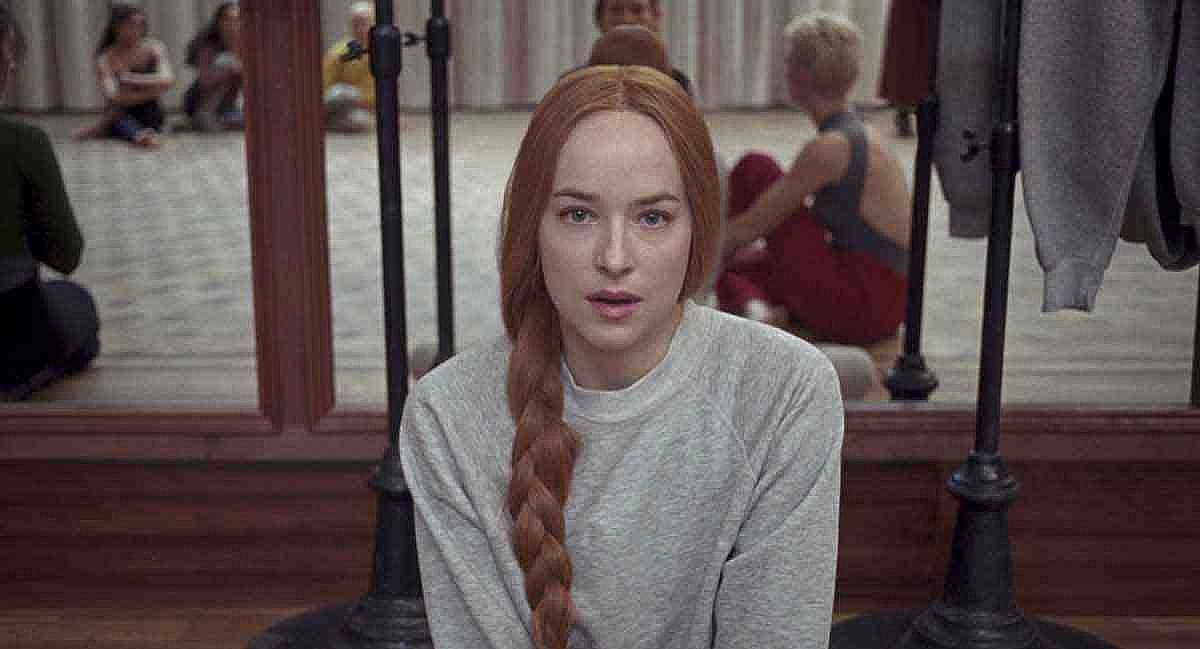
Dakota Johnson stars in in Luca Guadagnino’s "Suspiria". Image copyright and courtesy of Amazon Studios.
Created on Kodak 35mm film, Suspiria takes audiences on a skin-creeping journey into the world of witches and the supernatural. The Amazon Studios-backed horror was directed by Luca Guadagnino with Thai DP Sayombhu Mukdeeprom overseeing the stylish cinematography and Radiohead’s Thom Yorke composing a haunting score to accompany the eerie visuals.
Set in Berlin 1977 and based on Dario Argento’s acclaimed 1977 film of the same name, the story follows a young and timid American dancer, played by Dakota Johnson, who enrolls at the renowned all-female Markos Dance Academy, run by the austere and mysterious Madame Blanc, played by Tilda Swinton.
Unbeknown to the fledgeling ballerina, the place is bedevilled by unusual and sinister happenings. Set against a backdrop of explosive actions taken by a radical leftist group hellbent on purging German society from Nazism, the unfolding story delivers a gradually intensifying sense that the staff and dancers are captives. They are imprisoned – either by the confines of the grand old building and the concrete barrier, which has partitioned the city and stands just a few yards from the academy’s door, or by the irresistible grip of an indiscernible, omnipotent force.
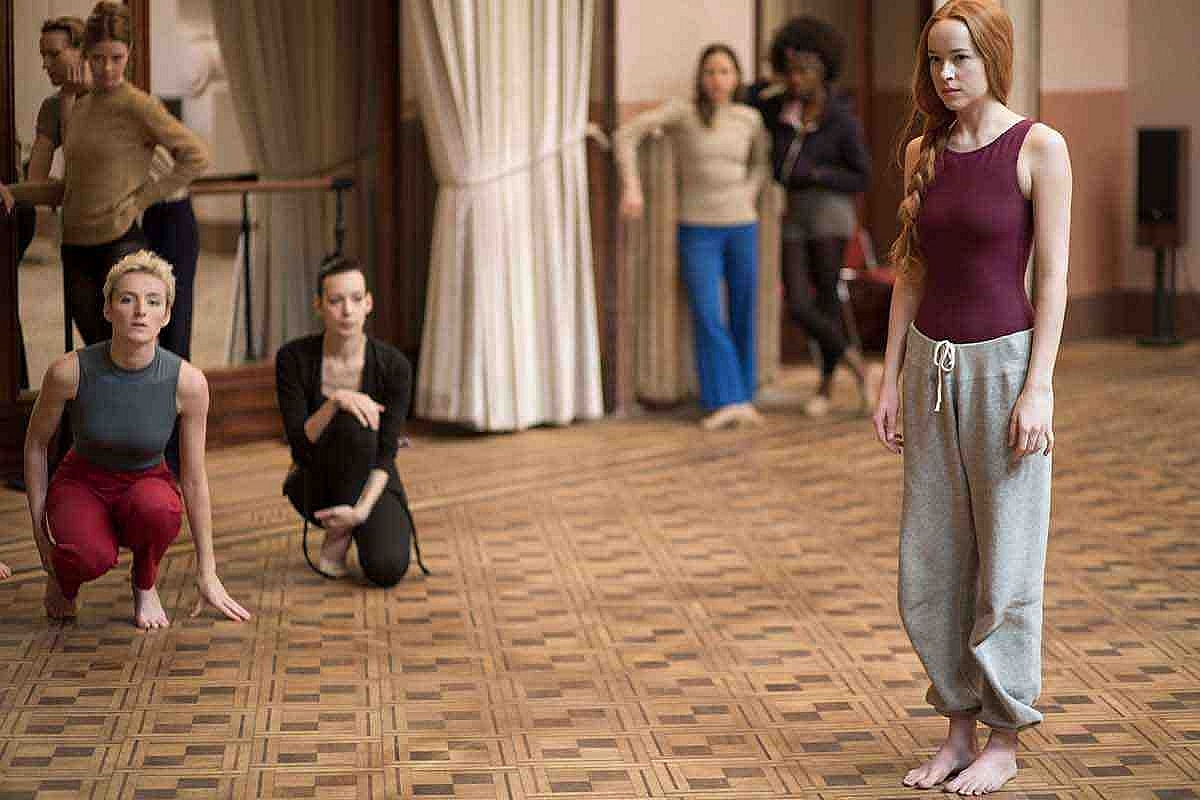
Dakota Johnson stars in in Luca Guadagnino’s "Suspiria". Image by Sandro Kopp. Copyright and courtesy of Amazon Studios.
Principal photography on the film initially began in Varese, Italy, at the end of October 2016, where The Grand Hotel Campo Dei Fiori, abandoned for some 20 years, served as the spartan interior of the Markos Dance Academy. The Italian leg of the production concluded in December 2016 after which the production moved to Berlin, where filming continued from February to March 2017.
For the feature, Guadagnino re-teamed with Mukdeeprom, who shot the widely-acclaimed love story Call Me by Your Name (2017) for the Italian director, capturing the heady sensations of youth during sun-bathed days and blissful nights, using just one film stock – KODAK VISION3 500T Color Negative Film 5219 – and, remarkably, capturing all of the action using just one lens.
Like its predecessor, Suspiria was shot on 35mm film stock, as Guadagnino prefers to create real images on celluloid, in camera, on set, working in collaboration with his cinematographer. But, unlike its luridly colorful forebear, Guadagnino’s new take is largely drained of garish colors, using low-contrast, natural-looking lighting and a muted palette of browns and grays, while retaining red as both a passing homage to Argento’s original film and as a motif to emote the threat of persistent danger and gory violence.
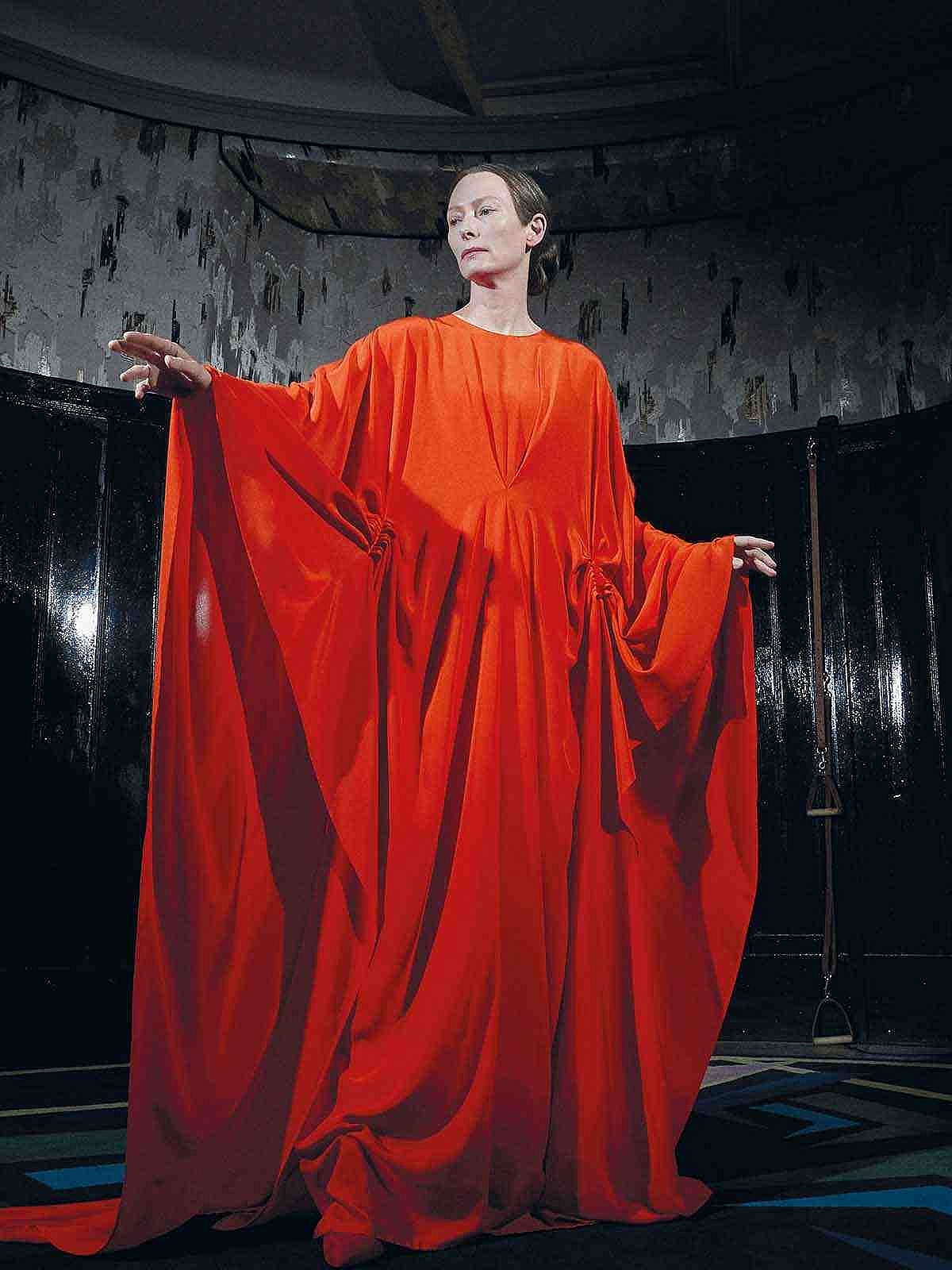
Tilda Swinton as Madam Blanc stars in in Luca Guadagnino’s "Suspiria". Image by Alessio Bolzoni. Copyright and courtesy of Amazon Studios.
“Although I sometimes shoot digital, filming on film always makes for a better practical experience and more rewarding aesthetic choice in storytelling,” says Mukdeeprom, who spent a good deal of time during prep soaking up the atmosphere and the changing quality of the natural light at the dilapidated hotel.
“First of all, I love the experience of working with an optical viewfinder and the real interaction this gives you with the actor’s performances and the light, as opposed to the uncertainty of the small screen display in a digital camera. Additionally, Luca wanted this production to look wintery, evil and really dark, and to populate the shadows with special details. By their nature, all Kodak film stocks readily work at the lower end of the exposure curve whilst simultaneously rendering the highlights elegantly in the same frame, and the skin tones are always first rate. Achieving that same level of detail and subtlety in digital is either extremely difficult or simply impossible. So, in my opinion, it’s just easier and better to start with film.”
In their search for a realistic and natural look, Mukdeeprom also says he and Guadagnino watched a range features from the likes of Rainer Werner Fassbinder and Chantal Ackerman, taking inspiration by their austere and minimalist style.
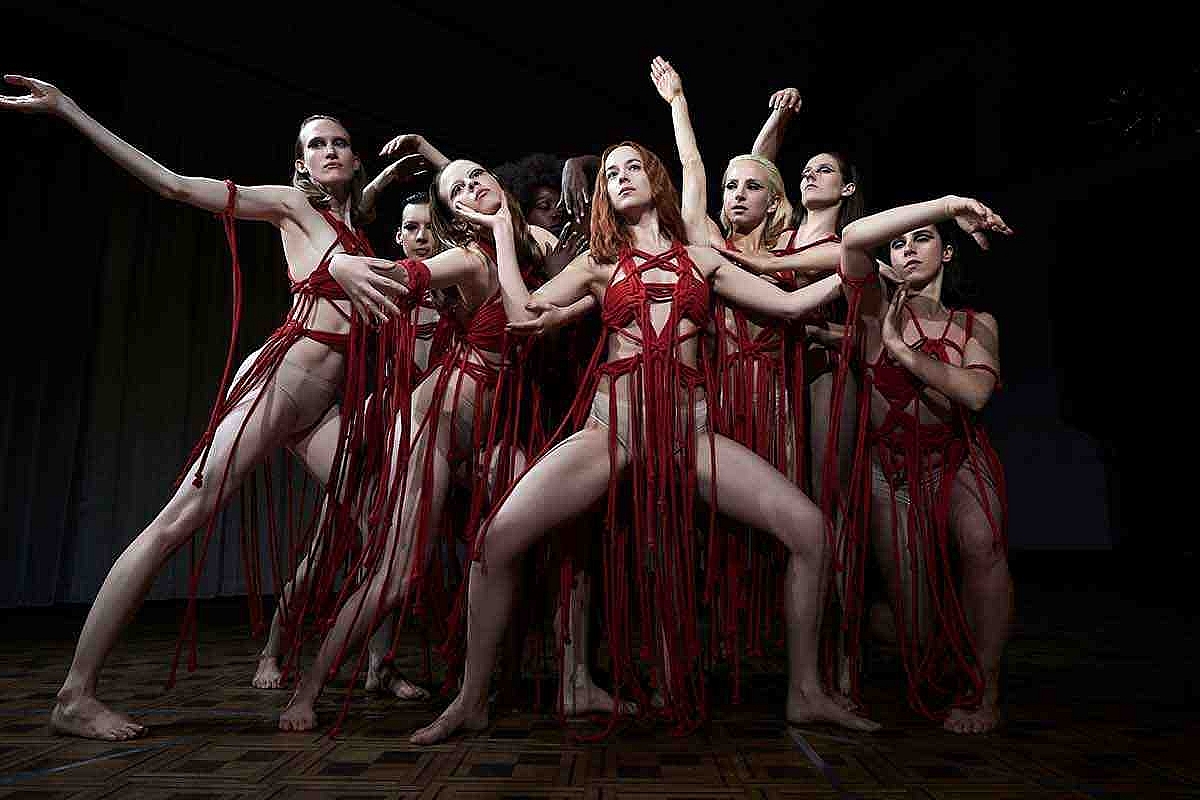
Mia Goth as Sara and Dakota Johnson as Susie star in Luca Guadagnino’s "Suspiria". Image by Alessio Bolzoni. Copyright and courtesy of Amazon Studios.
After testing at the location, Mukdeeprom settled on a mixture of Cooke S3 and other vintage lenses, fitted to ARRI LT cameras, capturing uncorrected on VISION3 500T Color Negative Film 5219.
“About 90% of film was going to be shot inside, or at night, so I needed the speed of the 500T. It gives you great freedom to shoot in ultra-low-light conditions, and I knew I could push the exposure by a stop in very dark conditions without affecting the picture quality,” he says. “Plus, the 500T has a seductive texture, with a very nice fine grain structure, to capture the mysterious nature of the supernatural vibrations in the story.
“Knowing Luca’s directorial style, I prefer to light overall spaces in order to give the actors the freedom to find their performances and their natural marks. So, despite working at the lower end of the exposure curve, I felt that the 500T was the perfect stock to capture the colors of the set and costume design, whilst having the latitude to render the contrast of light and dark in the same frame without having to constantly adjust the lighting.”
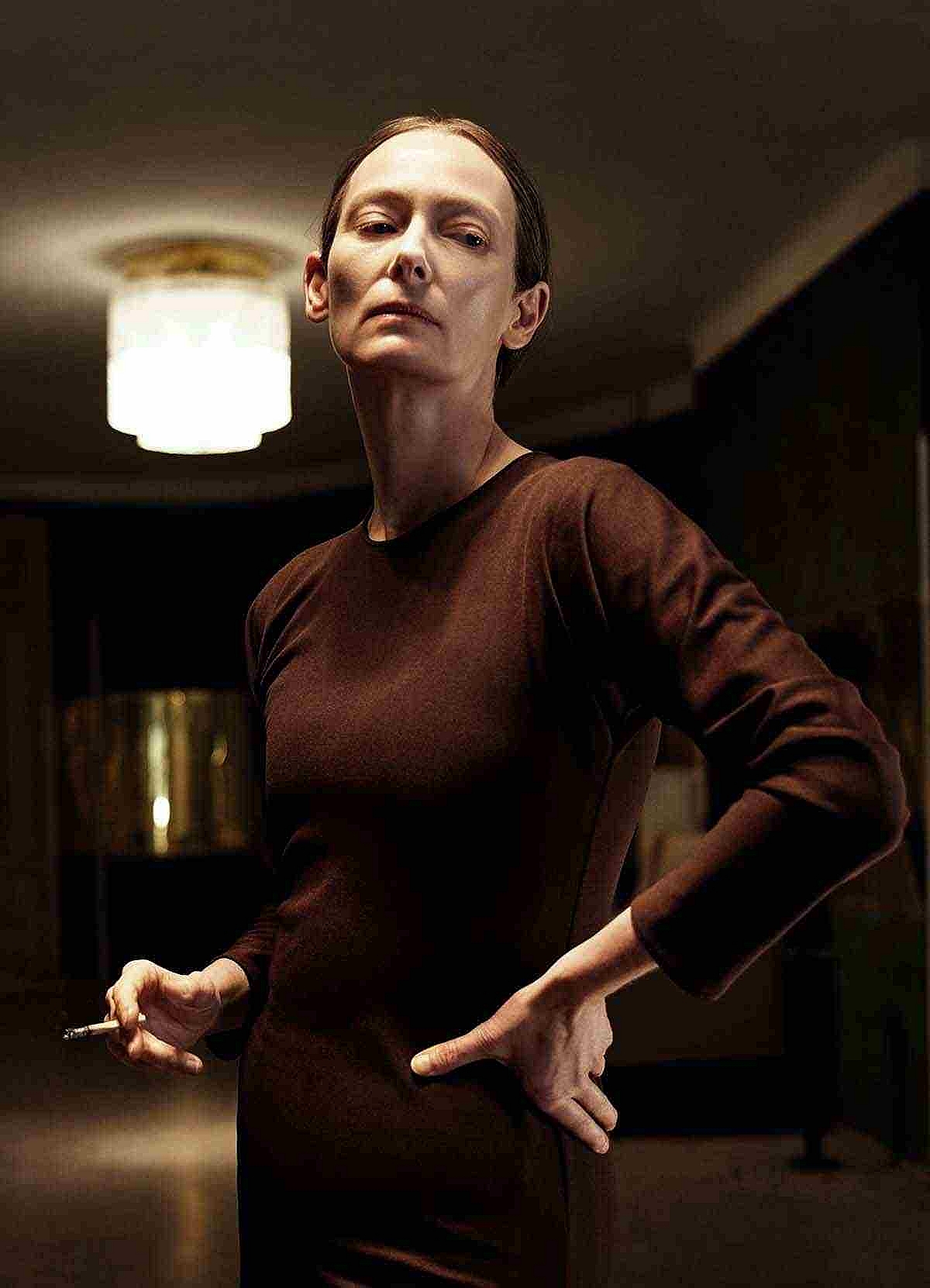
Mukdeeprom operated during the production, keeping the camera moves from the dolly restrained and straightforward, and eschewing the use of handheld. His camera crew included Massimiliano Kuveiller as focus puller, Ionel Mandruta as loader, along with gaffer Francesco Galli and Florin Niculae for the respective Italian and German stints of production, and Massimo Spina as key grip. As with Call Me by Your Name, the rushes from Suspiria were processed at Augustus Color Laboratory in Rome.
He concludes: “I am very happy with the visual outcome of our re-imagining of Suspiria, which was an original masterpiece in itself. As a story of how witches and the supernatural can inhabit the world, film helped us deliver something quite different to that original, that is alive and real and really quite fearsome.”